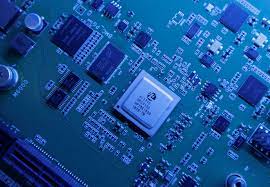BIS Adopts New Export Controls Aimed at Impeding China’s Ability to Acquire Advanced Computing Capabilities
Alex Cotoia, Regulatory Manager at The Volkov Law Group, rejoins us for an important posting on new Commerce Department rules relating to computer product exports to China. Alex can be reached at [email protected].

On October 13, 2022, the U.S. Department of Commerce’s Bureau of Industry and Security (“BIS”) published an interim final rule that significantly expanded export controls designed to thwart China’s efforts to acquire sophisticated technology to enhance their military and intelligence capabilities. Among other things, the new rule: (a) adopts a new general prohibition aimed at curbing the export of critical advanced computing commodities; and (b) imposes new item-based controls on semiconductor manufacturing equipment.
New General Prohibition
BIS’ new, enhanced export controls apply to a broad range of items classified as advanced computing commodities. Effective October 21, 2022, BIS will now enforce a new general prohibition that forbids the export, reexport, or transfer (in-country) without a license of any item subject to the EAR meeting the following product scope:
- An integrated circuit subject to the EAR and specified in ECCNs 3A001, 3A991, 4A994, 5A002, 5A004, or 5A992 (when intended for certain newly prohibited end uses);
- A computer, electronic assembly, or component subject to the EAR and specified in ECCNs 4A003, 4A004, 4A994, 5A002, 5A004, or 5A992 (when intended for certain newly prohibited end uses);
- Any item subject to the EAR when the person has knowledge that such items will be used in the development or production of integrated circuits at a semiconductor facility located in China that meets certain requirements;
- Any item subject to the EAR and classified in Product Groups B, C, D or E in Category 3 of the Commerce Control List (“CCL”) (under the circumstances discussed below); and
- Any item subject to the EAR when used in connection with the development or production in China of any parts, components, or equipment specified under ECCNs 3B001, 3B002, 3B090, 3B611, 3B991, or 3B992.

With respect to the first two categories of commodities—namely, integrated circuits, computers, electronic assemblies and other components—a person may not engage in export, reexport, or transfer activity if such items are to be used in connection with: (1) the development, production, use, operation, installation, maintenance, repair, overhaul, or refurbishing of a supercomputer located in, or destined for, China; or (2) the development or production of any component or equipment that will be incorporated into a supercomputer similarly located in, or destined for, China.
The third category of commodities—namely, any item subject to the EAR (including items designated as EAR99)—are prohibited for export to China only when a person knows that such items will be used in the development or production of integrated circuits at a semiconductor facility physically located in China known to produce: (i) logic integrated circuits using non-planar transistor architecture or with a production technology node of 16/14 nanometers or less; (ii) NOT AND (NAND) memory integrated circuits with 128 layers or more; or (iii) dynamic random-access memory (DRAM) integrated circuits using a production technology node of 18 nanometer half-pitch or less.
Items enumerated under EAR Product Groups B, C, D, or E in Category 3 of the CCL are also prohibited for export to China when a person knows that the item will be used in connection with the development or production of integrated circuits at any semiconductor fabrication facility located in China, but the person is otherwise unaware of the precise technical details involving the final integrated circuit product. Moreover, any items subject to the EAR when utilized in connection with the development or production in China of any parts, components or equipment specified under certain ECCNs associated with Category 3 are likewise prohibited for export. These items generally include equipment (including test equipment) utilized in connection with the manufacture of semiconductor devices and materials.
In conjunction with the new prohibition, BIS’ new interim final rule also expands licensing requirements for 28 existing entities designated in Supplement No. 4 to Part 744 to the EAR that are located in China to “further address the national security and foreign policy concerns” related to China’s acquisition of supercomputer capabilities for nuclear weapons development, advanced intelligence collection, and surveillance.
Semiconductor Manufacturing Equipment

As of October 7, 2022, specified semiconductor manufacturing equipment is now controlled for Regional Stability (“RS”) purposes. Under the new rule, licenses for exports of items classified under ECCN 3B090 (and associated software and technology contained in ECCNs 3D001 and 3E001) are subject to a policy of denial when destined for end-users based in China itself. Notably, however, the new policy does not apply to “end users in China that are headquartered in the United States or in a country in Country Group A:5 or A:6.” Under those circumstances, licenses will be considered by BIS on a “case-by-case basis” taking into account the technology level of the manufacturing items implicated, the exporting company’s customer base, and the existence of export compliance protocols. Effective October 21, 2022, the new rule adds a host of other advanced computing and semiconductor manufacturing items to the list of items controlled for RS purposes and subject to the aforementioned licensing policy of denial. Significantly, the new rule also implements a licensing requirement for the export of “direct products” of software subject to the EAR and that are used for the production of commodities specified in ECCNs 3A090 and 4A090.
By far the most consequential development under the rubric of semiconductor manufacturing concerns the adoption of a specific licensing requirement for U.S. Persons involved in the “support” of certain integrated circuit development or production efforts. Specifically, as of October 12, 2022, U.S. Persons are restricted from engaging in an expansive number of activities that could constitute “support” for the development of Chinese weapons of mass destruction end-uses. As utilized in the new rule, “support” includes: (i) shipping, transmitting, or transferring (in-country) to, or within, China any item not subject to the EAR that a person knows will be used in the development or production of integrated circuits; (ii) facilitating the shipment, transmission, or transfer of such items; and (iii) servicing such items. The rule’s specific emphasis on items “not subject to the EAR” makes it clear that—even in the context of foreign-manufactured advanced computing items—U.S. Persons are strictly prohibited from engaging in any activity that would result in Chinese acquisition of commodities comparable to those controlled by the EAR.
Key Takeaways and Practical Considerations

Increasing tensions with China over its aggressive military-civil fusion efforts are likely to result in the issuance of a plethora of new export controls on sensitive commodities that have the potential to enhance China’s offensive military capabilities. This is especially important in light of the seemingly intentional ambiguity over China’s intentions with respect to the occupation of Taiwan. U.S. companies subject to these new controls must continue to keep apprised of the latest developments in U.S.-China relations and modify their trade compliance policies frequently to properly account for new prohibitions and licensing requirements. Given the significance of these new controls to U.S. national security and foreign policy objectives, companies that violate these new regulations—either intentionally or negligently—are likely to be subject to significant monetary sanctions and administrative penalties.
















1 Response
[…] Source link […]